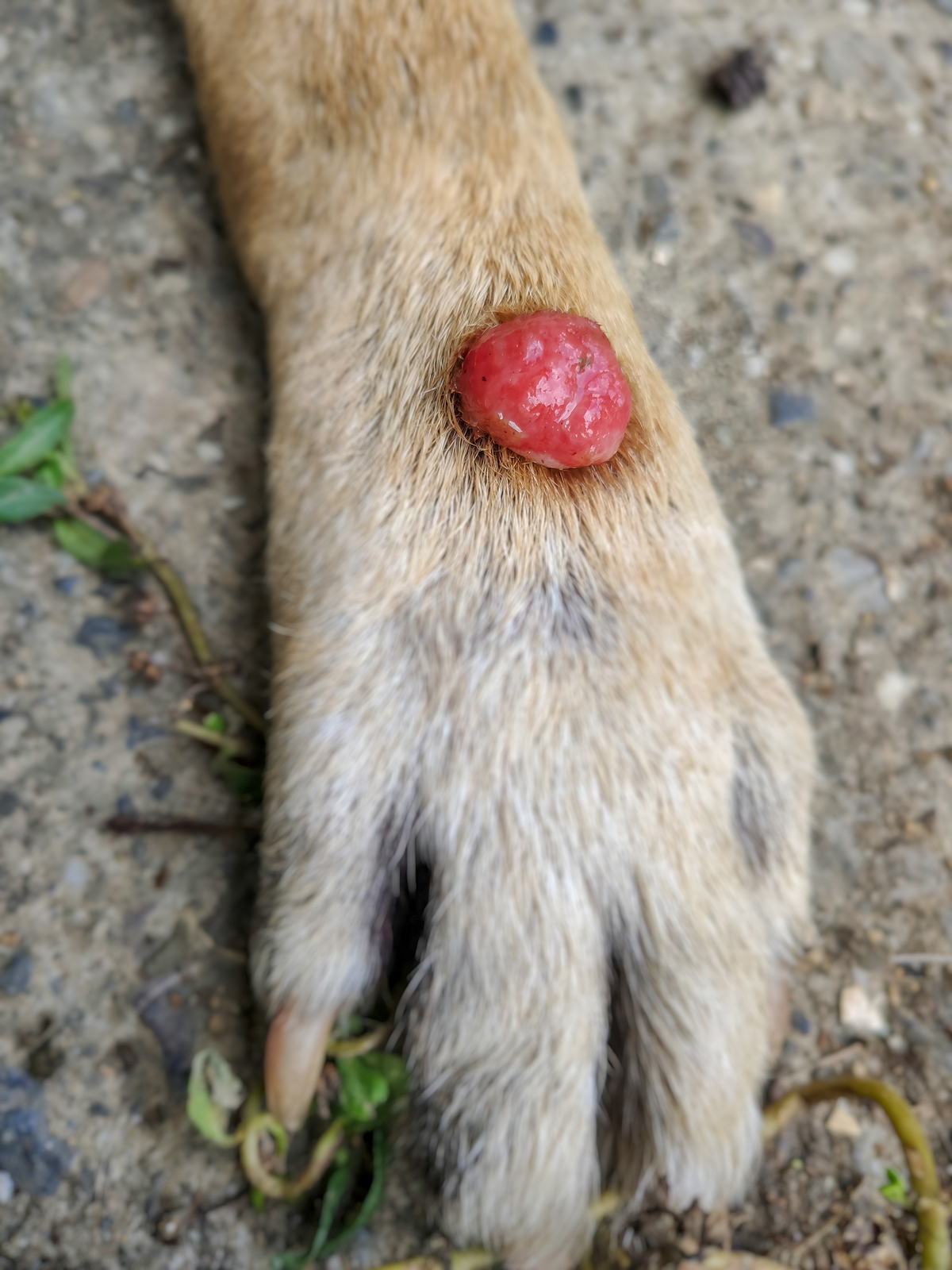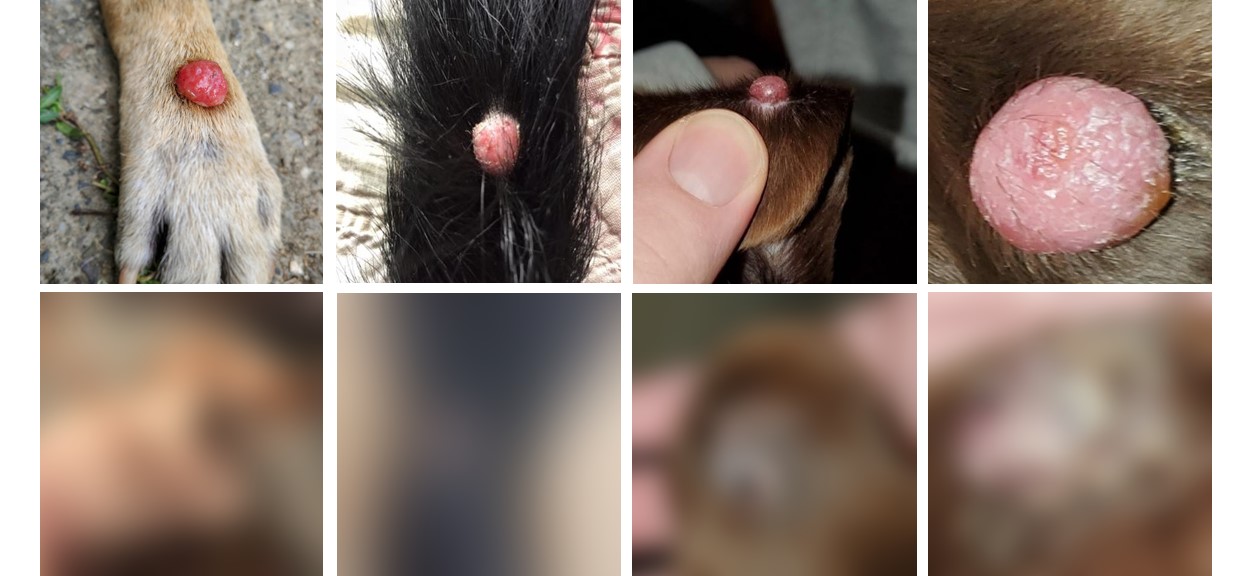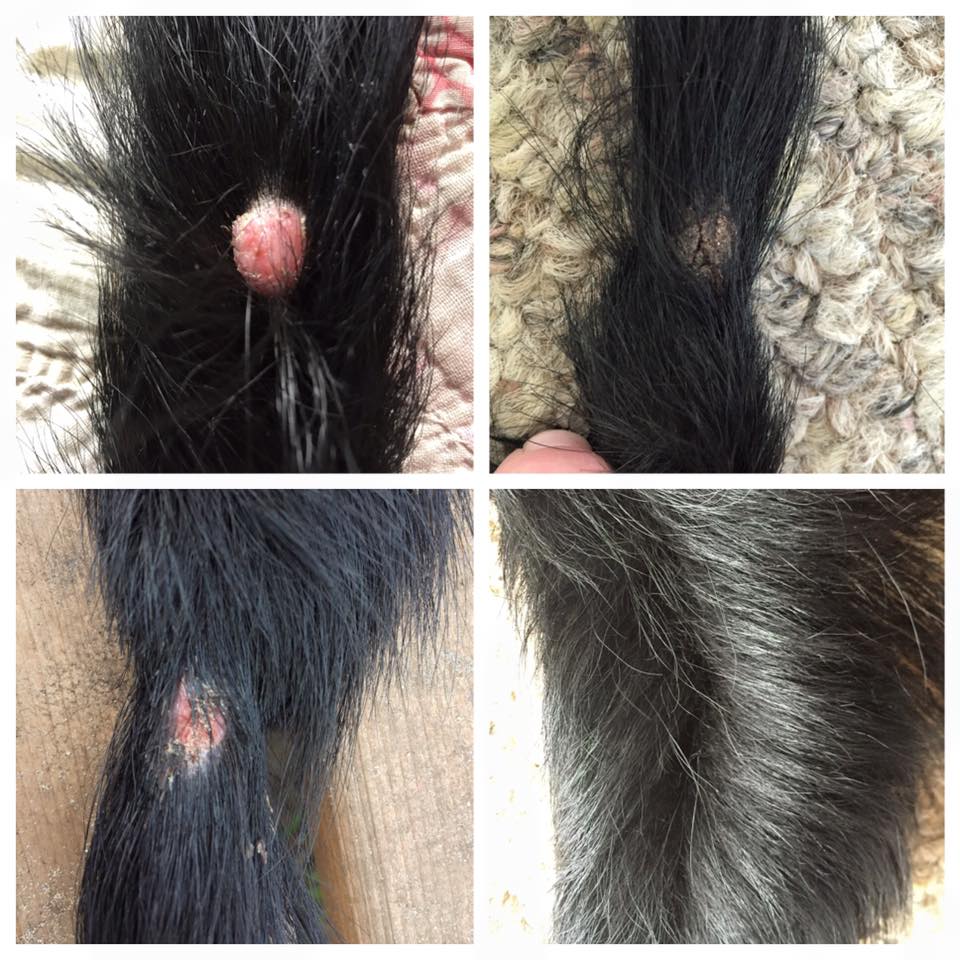Histiocytoma dog tumors are scary to find on your pup! Have you found a weird bump on your dog?
I’ve been there and I know it’s unsettling when you don’t know what you’re looking at or how to fix it.
Have no fear! I have good news for you! Histiocytoma dog tumors are benign, meaning non-cancerous, and there’s an inexpensive, natural way to get rid of them.
Are Histiocytoma Dog Tumors Common?
Yes. Most dogs affected are young. Histiocytomas usually occur in dogs under 2 years of age and sometimes in dogs as young as eight weeks.
Histiocytoma dog tumors can occur in any breed but some breeds appear to be more susceptible.
Top 5 Breeds Histiocytoma Dog Tumors Occur In
- American Pit Bull Terrier
- Boxer
- Bull Terrier
- Chinese Crested Dog
- Flat-Coated Retriever
Additional Top Breeds Histiocytoma Dog Tumors Occur In
- American Staffordshire Terrier
- Beagle
- Boston Terrier
- Dalmatian
- English Bull Terrier
- English Bulldog
- English Cocker Spaniel
- English Mastiff
- Italian Greyhound
- Jack Russell Terrier
- Labrador Retriever
- Miniature Pinscher
- Rottweiler (my breed of choice)
- Shar-Pei
- West Highland White Terrier
- Whippet
What Causes Histiocytoma Dog Tumors?
Histiocytoma dog tumors are made up of histiocytes cells. The cells are found in all layers of the skin but are most prominent in the stratum spinosum (the third layer of the epidermis).
Tumors deriving from these cells are defined according to the cell function instead of the cell type.
The histiocyte group of cells is part of the body’s immune surveillance. These cells work to prevent dangerous microbes from passing through.
Histiocytoma dog tumors occur when the cells grow and divide at an abnormally high rate. This results in small, red, button-shaped tumors.
They take up and process foreign antigens such as the following:
- pollens
- viral microorganisms
- bacterial microorganisms
- fungal microorganisms
The histiocytes cells then migrate to the local lymph nodes. Here they present the antigens to other immune system cells to stimulate them to act to protect the body.
In other words, histiocytoma dog tumors are an accumulation of cells that were acting to protect your dog’s body from foreign antigens.
Unlike a mast cell tumor, histiocytomas are just a nuisance and of no real danger to your dog, normally appearing on the head, neck, ears, tail or legs.
It is unusual for more than one tumor to be found on the same dog at one time or for the same tumor to occur later at another site but both these things can happen.
It’s very rare but in older dogs or dogs with poor immune systems, histiocytomas multiply and turn cancerous.
How Dangerous is a Histiocytoma Dog Tumor?
The tumor is a benign lump. That’s all. Many will regress spontaneously over a few months but that’s only if your dog doesn’t bump, scratch or otherwise tear the skin covering the tumor.
Histiocytoma dog tumors are commonly removed because of ulceration, infection, and bleeding.
And yes, dogs have died from secondary infections of an untreated histiocytoma tumor. In some cases, the local lymph nodes may swell. This may be because there is a reaction to a secondary infection.
This is why it’s very important to treat the tumor sooner than later.
Click Here for Before and After Pictures and Full Guide
Click Here for Before and After Pictures and Full Guide
Mast Cell Tumors Versus Histiocytoma Dog Tumors
Mast cell tumors occur within the cells of the connective tissue and will eventually metastasize to other organs. Histiocytomas also originate within cells but are not cancerous.
What Your Vet Will Tell You
Your vet will likely be quick to tell you to have a histiocytoma dog tumor surgically removed and/or will prescribe steroids and antibiotics. All of which will cost you a good deal of money and put your dog’s body through a great deal of stress.
What your vet will likely not tell you is how to cure the histiocytoma dog tumor naturally, without surgery or harmful medications, for less than $5, with a product you probably already have in your pantry.
Yes, I healed my dog’s histiocytoma naturally! No surgery needed.
Benign Histiocytoma Dog Tumor Identifiers
- Fast Growing
Histiocytoma dog tumors are fast-growing. They seem to appear out of nowhere which can be scary to dog owners!
The tumors are generally pink or reddish in color and smooth.
- Itchy
As the histiocytoma dog tumors heal, the body releases histamine as an autoimmune response and that makes the tumor itchy.
It’s important to prevent your dog from scratching or biting the histiocytoma.
- Painless
Histiocytoma dog tumors are not painful. However, depending on the tumor’s location, the tumor can be irritated which can cause the tumor to ulcerate.
A scratched or ulcerated tumor is susceptible to bacterial infection.
While the histiocytoma itself won’t cause your dog pain, an infected bump will. Inflammation of the tumor is the clearest sign of infection. Your dog may also show the following symptoms.
- agitation
- restlessness
- sensitivity to touch
- unusually quiet or depressed
- loss of appetite
- change in breathing
- Mostly in Young Dogs
Histiocytoma dog tumors typically affect very young dogs, usually under two or three years of age.
They can occur in older dogs from time to time but mostly in dogs younger than 3 years of age.
Size and Appearance of Histiocytoma Dog Tumors
Histiocytomas are small, round and raised bumps. As mentioned above, they grow very fast in the first few weeks and generally reach 2-3 cm in size.
Histiocytoma dog tumors look like buttons and so are commonly referred to as “button tumors”.
The tumors are pinkish and sometimes more on the red side.
Recap: Recognizing a Histiocytoma Dog Tumor
- button-shaped
- fast growing
- firm
- nonpainful
- pinkish red
- small
- solitary
Histiocytoma Dog Tumor Treatments
Any time we see a bump or lump on ourselves or our dogs we usually rush to one conclusion: cancer!
Many people would prefer to drive straight to the vet to have a histiocytoma removed in an effort to be safe rather than sorry.
Depending on the veterinarian’s experience and level of professionalism he or she may suggest waiting until the bump shows signs of regression in order to avoid surgery. Others may suggest a biopsy. Most will suggest surgery.
For my dog’s histiocytoma tumor, I personally avoided veterinary intervention for several reasons.
- There’s no reason to risk the health consequences of surgery.
- The tumors themselves are harmless.
- A natural treatment improves overall health.
- Naturally curing histiocytomas saves $100s.
Below is my dog’s histiocytoma that I healed with apple cider vinegar!
The Downside of a Natural Treatment
There’s one main downside to a natural treatment. It takes time. That’s fine by me but not everyone feels the same way. Some want the problem solved as quickly as possible.
During a natural treatment, you must make sure that your dog doesn’t scratch, bite or otherwise rupture the bump. It needs to slowly regress with treatment and during this time you need to keep your dog from causing an infection by damaging the bump.
Generally, this is fairly easy and within a week the bump will be dried up enough that you no longer have to worry about it getting infected. Within 2-3 weeks your dog will be as good as new!
Click Here for Before and After Pictures and Full Guide
Click Here for Before and After Pictures and Full Guide
Naturally Treat Histiocytoma Dog Tumors with Apple Cider Vinegar
How does apple cider vinegar work on histiocytoma dog tumors?
Apple cider vinegar contains acetic acid, lactic acid, succinic acid and citric acid, all of which have been shown to treat abnormal skin issues.
The apple cider vinegar (ACV) attacks the abnormal cells in the tumor, killing them. As it kills them, you’ll notice your dog’s histiocytoma drying up. This is a good sign.
Vinegar also has antibacterial properties and can kill off strains of harmful bacteria. This is very useful during the treatment process.
All of the above acids are also known to reduce scarring. So, as your dog heals, the ACV is also working to improve the health of the affected area.
Learn how to treat your dog’s histiocytoma with apple cider vinegar by following the below link:


